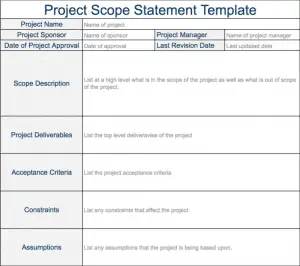Product Based Planning is a four step process that helps us define a product we are trying to build, what sequence it should be built it, and what activities are then needed to actually build the product.
Product Based Planning is one of only four techniques prescribed in PRINCE2, the others being Quality Reviews, Change Control Approach, and Project Filing. The four steps of Product Based Planning are to produce in order:
- An Overall Product Description
- A Product Breakdown Structure
- Product Descriptions for each product
- A Product Flow Diagram
1. Overall Product Description
2. Product Breakdown Structure
A Product Breakdown Structure is simply a hierarchical and complete decomposition of the overall product we are trying to create. You can follow the link to learn how to create one, but a simple example of one is shown below. The advantages of breaking down the overall product into lower and lower levels include that it makes it easier to estimate the project, it makes it easier to apply quality criteria, and it helps us avoid missing products or sub-products.
PRINCE2 gives much attention to simple products, intermediate products, integration products, collective groupings, product states, external products, and defines different kinds of products. I’m not going to cover those topics here as I’m trying to provide an introduction to Product Based Planning, and in practice I think the information I’ve provided above is enough to get you up and running unless your operating in a formal environment where you need to adhere strictly to PRINCE2.
3. Product Descriptions
- What is the product?
- Why is it needed?
- What are the key quality factors?
- How will quality be judged?
4. A Product Flow Diagram
The final thing to do in Product Based Planning is to produce a Product Flow Diagram (PFD). To create the PFD you take the products from the PBS and sequence them in the order they will be created. Here you will answer questions such as:
- What other products is each product dependent on?
- Are there dependencies outside the scope of the PBS?
- Can any parallelism be achieved?
- Have we missed anything?
At this stage you might be wondering what’s the difference between a Product Flow Diagram and a Gantt Chart? The answer is that they’re very similar – a PFD is basically a Gantt chart.











